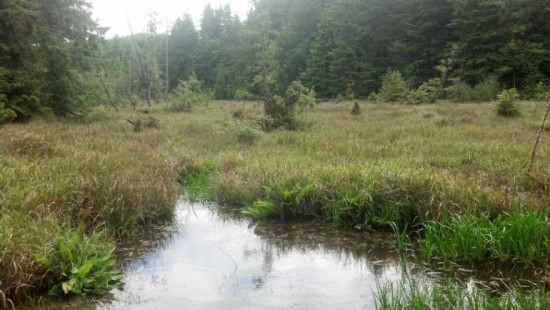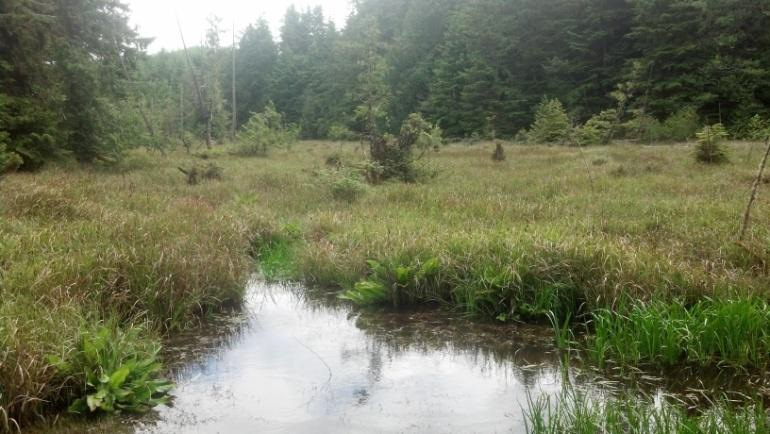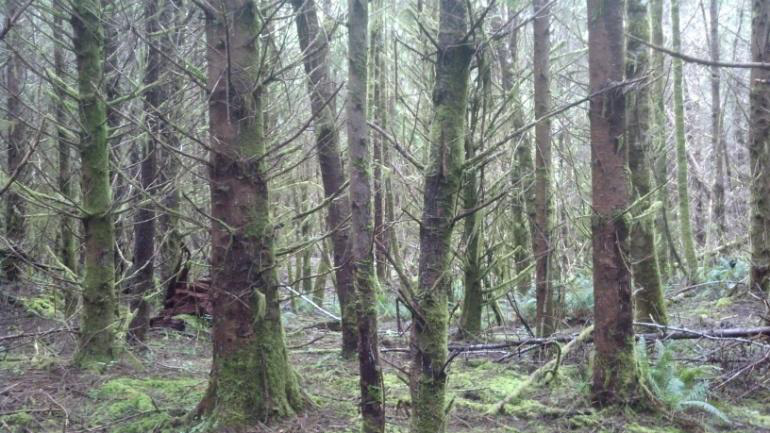Restoring Forest Along Willapa Bay

Forterra: Lynn Point and Nemah River, Pacific County, WA
By: Christina Davis, edited by NNRG
Northwest Certified Forestry (NCF) member Forterra, has long recognized the ecological importance of its forest reserve along Willapa Bay. Located at the confluence of the Nemah River and the estuary, the 300-acre forest contributes to a biological hotspot for migratory birds and endangered fish. But it took assistance from the Environmental Quality Incentives Program and NCF to develop a new stewardship plan for the land managed by the Seattle-based conservation organization. Now with a plan in place, Forterra is on a restoration journey to further enhance the forest and its contribution to a diverse and vital landscape.
A half-hour drive from Long Beach takes one passed the Willapa Bay National Wildlife Refuge to Lynn Point at the mouth of the Nemah River. Here the river meanders by the small cape into the eastern waters of Willapa Bay. Lynn Point encompasses several distinct ecosystems: forested, fresh water and salt water habitats. Tidelands are home to shellfish, crabs, juvenile coho and chinook salmon, brown pelicans, gulls and bald eagles, while forests shelter black-tailed deer, Roosevelt elk, cougar, woodpeckers, and mountain beaver.
The forest was previously used as commercial timberland and experienced two timber harvests in the early and late 1900s. Forterra acquired the Nemah River parcels in 2004 and the adjoining Lynn Point parcels in 2006. They obtained the property as a part of their shoreline initiative to conserve and steward land on Washington’s Pacific Coast.
The forestland was held under a general management plan until Forterra and Lands Manager Elsa Sargent felt the need for a more comprehensive plan. Elsa explains that they “decided to go with NNRG because they share our goals, not just profit goals, [but the] health and future trajectory of the property”.
Forterra’s long term objective for Lynn Point and Nemah River is to restore upland forest native species and ecological processes that will protect shoreline and riparian zones. Improving the diversity of tree species and creating complex structure restores overall ecosystem function to upland forests and tidelands. Significant ecological benefits include wildlife habitat, improved water quality, and the reduction of soil erosion. The Nemah River presents the opportunity to safeguard a natural buffer between the estuary and developed land.
In 2013, Elsa worked with Director of Forestry Kirk Hanson to develop a management plan for the property. Because of their conservation goals, Forterra qualified for EQIP grant funding from the Natural Resources Conservation Service (NRCS). The awarded funds offset the cost of creating the Lynn Point and Nemah River Conservation Activity Plan.
EQIP is a federally funded cost-share program that provides landowners with financial and technical assistance to implement conservation or ecological improvement projects. Funds can be allotted toward planning efforts such as developing a forest management plan or implementation efforts such as pruning, tree planting, or creating bird boxes. Forterra has used EQIP funds for other projects, so Elsa was comfortable working with NRCS. She says that it is a streamlined process and overall “it is a great asset to have NRCS restoration support.”
As former timberland, the property is very dense with planted young Douglas-fir and lacking the complexity of snags, large downed logs and various tree species characteristic of natural forests in the region. In many stands, the canopy has almost reached a closure state, limiting the light resource and thereby the diversity of understory plants. The high density of planted trees means an increase in competition for limited resources, the stress that can leave the trees more susceptible to disease and windthrow. Red alder has begun to naturally regenerate in sparse canopy gaps along with red huckleberry, salmonberry, and cascara. The management plan includes recommendations to pre-commercial thin several dense stands to open up the canopy and optimize the growth of red alder, Sitka spruce, and western hemlock.
The positive experience with the management plan project has made Elsa comfortable with the NRCS process; she is now applying for additional EQIP funding. This time to conduct the pre-commercial thinning work described in phase one of the management plan. She says that three stands will be ready for thinning in the next year and she is collaborating with NRCS and NNRG to find a suitable local contractor.
Elsa calls the restoration plan for Lynn Point and Nemah River a pilot project. It represents “a more concerted effort [by Forterra] to actively manage forest stand development towards old growth conditions.”
Over the last 20 years, Pacific County’s estuaries have attracted several other conservation and restoration projects. The Nature Conservancy and the U.S. Fish and Wildlife Services are restoring 10,000 acres in the adjacent Ellsworth Creek Watershed. Other conservation groups have purchased nearby lands of biological importance. As Forterra and similar organizations continue to champion the ecological value and cost effective nature of conservation practices, this type of forest stewardship has the potential to show its environmental value on an international scale and contribute economically to the local level.
——————
Inspired? Learn what EQIP can do for your forest:




Leave a Reply